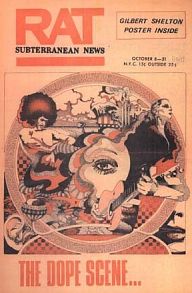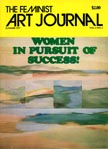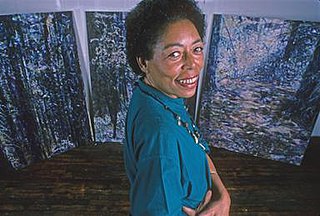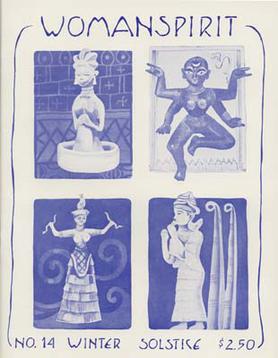Related Research Articles

Ms. is an American feminist magazine co-founded in 1971 by journalist and social/political activist Gloria Steinem. It was the first national American feminist magazine. The original editors were Letty Cottin Pogrebin, Mary Thom, Patricia Carbine, Joanne Edgar, Nina Finkelstein, Mary Peacock, Margaret Sloan-Hunter, and Gloria Steinem. Beginning as a one-off insert in New York magazine in 1971, the first stand-alone issue of Ms. appeared in January 1972, with funding from New York editor Clay Felker. It was intended to appeal to a wide audience and featured articles about a variety of issues related to women and feminism. From July 1972 until 1987, it was published on a monthly basis. It now publishes quarterly.

Lilith is an independent, Jewish-American, feminist non-profit magazine that has been issued quarterly since 1976. The magazine features award-winning investigative reports, first-person accounts, entertainment reviews, fiction and poetry, art and photography. Topics range from rabbinic sexual misconduct, to new rituals and celebrations, to deconstructing Jewish-American stereotypes, to understanding the Jewish stake in abortion rights.

Cleo is an Australian monthly women's magazine. The magazine was founded in 1972 in Australia; the Australia and New Zealand editions were discontinued in February 2016. Aimed at an older audience than the teenage-focused Australian magazine Dolly, Cleo was published by Bauer Media Group in Sydney and was known for its Cleo Bachelor of the Year award. In June 2020, Cleo was acquired by the Sydney investment firm Mercury Capital.

Rat Subterranean News, New York's second major underground newspaper, was created in March 1968, primarily by editor Jeff Shero, Alice Embree and Gary Thiher, who moved up from Austin, Texas, where they had been involved in The Rag.

The feminist art movement in the United States began in the early 1970s and sought to promote the study, creation, understanding and promotion of women's art. First-generation feminist artists include Judy Chicago, Miriam Schapiro, Suzanne Lacy, Judith Bernstein, Sheila de Bretteville, Mary Beth Edelson, Carolee Schneeman, Rachel Rosenthal, and many other women. They were part of the Feminist art movement in the United States in the early 1970s to develop feminist writing and art. The movement spread quickly through museum protests in both New York and Los Angeles, via an early network called W.E.B. that disseminated news of feminist art activities from 1971 to 1973 in a nationally circulated newsletter, and at conferences such as the West Coast Women's Artists Conference held at California Institute of the Arts and the Conference of Women in the Visual Arts, at the Corcoran School of Art in Washington, D.C..

The Furies Collective was a short-lived commune of twelve young lesbian separatists in Washington, D.C., in 1971 and 1972. They viewed lesbianism as more political than sexual, and declared heterosexual women to be an obstacle to the world revolution they sought. Their theories are still acknowledged among feminist groups.
The Radical Therapist was a journal that emerged in the early 1970s in the context of the counter-culture and the radical U.S. antiwar movement. It was an "alternative journal" in the mental health field that published 12 issues between 1970 and 1972, and "voiced pointed criticisms of psychiatrists during this period". It was run by a group of psychiatrists and activists who believed that mental illness was best treated by social change, not behaviour modification. Their motto was "Therapy means social, political and personal change, not adjustment".
Beverly Smith in Cleveland, Ohio, is a Black feminist health advocate, writer, academic, theorist and activist who is also the twin sister of writer, publisher, activist and academic Barbara Smith. Beverly Smith is an instructor of Women's Health at the University of Massachusetts Boston.

HERESIES: A Feminist Publication on Art and Politics was a feminist journal that was produced from 1977 to 1993 by the New York–based Heresies Collective.

The Feminist Art Journal was an American magazine, published quarterly from 1972 to 1977. It was the first stable, widely read journal covering feminist art. By the time the final publication was produced, The Feminist Art Journal had a circulation of eight thousand copies, and ten thousand copies of the last edition were printed.
Cindy Heller Nemser was an American art historian and writer. Founder and editor of the Feminist Art Journal, she was an activist and prominent figure in the feminist art movement and was best known for her writing on the work of women artists such as Eva Hesse, Alice Neel, and Louise Nevelson.

Vivian E. Browne was an American artist. Born in Laurel, Florida, Browne was mostly known for her painting series called Little Men and her Africa series. She is also known for linking abstraction to nature in her tree paintings and in a series of abstract works made with layers of silk that were influenced by her travels to China. She was an activist, professor, and has received multiple awards for her work. According to her mother, Browne died at age 64 from bladder cancer.

WomanSpirit was a lesbian feminist quarterly founded by Ruth and Jean Mountaingrove and produced collectively near Wolf Creek, Oregon. It was the first American lesbian/feminist periodical to be dedicated to both feminism and spirituality. Many of the contributors to WomanSpirit were, or became, well known within the women's spirituality movement. It had 40 publications, covering topics such as ecology, goddess myths and rituals, feminist theory, and divination. Its submissions included articles, photos, letters, book reviews, artwork, and songs.

Lavender Woman was a lesbian periodical produced in Chicago, Illinois, from 1971 to 1976. The name Lavender Woman comes from the color lavender's prominence as a representation of homosexuality, starting in the 1950s and 1960s. It is believed that the color became a symbol due to it being a product of mixing baby blue and pink. Lavender truly hit the spotlight as a symbol of homosexuality empowerment in 1969 when lavender sashes and armbands were distributed during a "gay power" march in New York.
Women & Film, published in California between 1972 and 1975, was the first feminist film magazine, "a project that would transform cinema".
Primavera was an American feminist magazine based in Chicago, Illinois from 1975 to 2006. Established by Janet Ruth Heller, Celia Josephson, and Deborah Gordon Fisher, the magazine contained poetry, illustrations, fiction, and photography. It was most notable for its lack of political content—they concerned themselves more with content that reflected on women’s experiences.
The New Women's Survival Catalog is a 1973 book, the collective outcome of an influential survey of second-wave feminist network activities across the United States. It was assembled in five months by Kirsten Grimstad and Susan Rennie. The book was promoted as a "feminist Whole Earth Catalog", referring to Stewart Brand's famous 1968–1972 counterculture magazine. The book was reissued by art book publisher Primary Information in September 2019.
References
- ↑ "Women’s Traditional Arts-- The Politics of Aesthetics." HERESIES, Vol. 1, No. 4, p.128, 1978. The Heretics. http://heresiesfilmproject.org/wp-content/uploads/2011/10/heresies4.pdf
- 1 2 Heller, Janet Ruth. Primavera and Black Maria: Two Chicago women's literary magazines.https://www.tandfonline.com/doi/pdf/10.1080/00497878.1994.9979019?needAccess=true
- ↑ Black Maria Collective. "About Us". Black Maria, vol. 1 issue 1, December 1971. https://voices.revealdigital.org/?a=d&d=CHIGCEJ19711201.1.3&e=-------en-20--1--txt-txIN---------------1